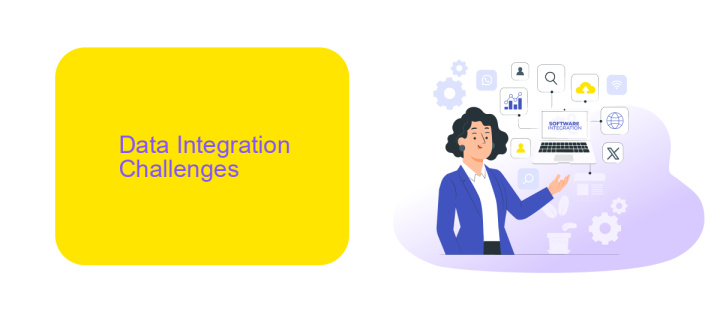Big Data Integration and Processing
Big Data Integration and Processing involves combining vast amounts of disparate data from various sources to generate meaningful insights. This process is critical for organizations aiming to harness the full potential of their data. By employing advanced algorithms and cutting-edge technologies, businesses can streamline operations, enhance decision-making, and drive innovation, ultimately gaining a competitive edge in today's data-driven world.
Introduction
Big Data Integration and Processing is a critical aspect of modern data management, enabling organizations to harness the power of large datasets for insights and decision-making. Effective integration ensures that data from various sources can be combined, cleaned, and processed seamlessly, providing a unified view of information.
- Data Source Identification: Recognizing and categorizing data sources.
- Data Cleaning: Removing inconsistencies and ensuring data quality.
- Data Transformation: Converting data into a usable format.
- Data Loading: Ingesting data into a centralized system.
Tools like ApiX-Drive facilitate the integration process by automating data workflows, reducing manual effort, and ensuring real-time data synchronization. These services streamline the connection between disparate data sources, allowing businesses to focus on analysis and strategic planning. As data continues to grow exponentially, the importance of efficient integration and processing cannot be overstated.
Data Integration Challenges

Data integration poses several challenges, primarily due to the diverse nature of data sources and formats. Organizations often collect data from various systems, such as databases, cloud services, and IoT devices, each with its unique structure and protocol. This heterogeneity complicates the process of unifying data into a coherent dataset. Moreover, data quality issues like missing values, duplicates, and inconsistencies further exacerbate the integration process, necessitating robust data cleaning and transformation mechanisms.
Another significant challenge is the scalability of data integration solutions. As the volume of data grows, traditional methods may become inefficient or even obsolete. Modern tools like ApiX-Drive offer automated data integration services that can handle large-scale data with minimal human intervention. These solutions provide real-time synchronization and support a wide range of data sources, making them ideal for today's dynamic data environments. However, ensuring data security and compliance with regulations such as GDPR remains a critical concern that organizations must address during the integration process.
Big Data Integration Solutions

Big data integration solutions are essential for businesses looking to harness the power of large datasets. These solutions allow for the seamless merging of data from various sources, ensuring that insights can be drawn efficiently and accurately. One such solution is ApiX-Drive, which simplifies the integration process by offering a user-friendly interface and robust functionality.
1. **ApiX-Drive**: This tool allows for the integration of various data sources without the need for coding, making it accessible to non-technical users.
2. **ETL Tools**: Extract, Transform, Load (ETL) tools are crucial for processing and integrating data from different systems.
3. **Data Warehouses**: Centralized repositories that store integrated data from multiple sources, facilitating easy access and analysis.
4. **APIs**: Application Programming Interfaces (APIs) enable different software systems to communicate and share data seamlessly.
5. **Data Lakes**: These storage systems can handle vast amounts of raw data, providing a flexible solution for big data integration.
Choosing the right big data integration solution depends on various factors such as the complexity of data sources, the volume of data, and the specific needs of the business. Tools like ApiX-Drive offer a streamlined approach to integration, making it easier for companies to leverage their data assets effectively.
Data Processing

Data processing is a crucial step in the Big Data lifecycle, transforming raw data into meaningful insights. This phase involves various techniques and tools to clean, normalize, and aggregate data, ensuring it is accurate and usable for analysis. Effective data processing can significantly enhance decision-making capabilities and operational efficiency.
To achieve optimal results, organizations employ a variety of methodologies and technologies. These include batch processing, where large volumes of data are processed at once, and real-time processing, which allows for immediate data analysis. Choosing the right approach depends on the specific needs and goals of the business.
- Data cleaning: Removing inaccuracies and inconsistencies.
- Data transformation: Converting data into a usable format.
- Data integration: Combining data from different sources.
- Data aggregation: Summarizing data for analysis.
Services like ApiX-Drive play a pivotal role in streamlining data integration processes. By automating the connection between various data sources and applications, ApiX-Drive simplifies the workflow, allowing businesses to focus on deriving insights rather than managing data logistics. This integration capability is essential for maintaining data quality and ensuring seamless data flow across the organization.
- Automate the work of an online store or landing
- Empower through integration
- Don't spend money on programmers and integrators
- Save time by automating routine tasks
Big Data Analytics
Big Data Analytics involves the examination of vast datasets to uncover hidden patterns, correlations, and insights that can drive informed decision-making. By leveraging advanced analytical techniques such as machine learning, data mining, and statistical analysis, organizations can transform raw data into actionable intelligence. This process enables businesses to enhance operational efficiency, predict market trends, and create personalized customer experiences.
Effective integration and processing of big data are crucial for successful analytics. Tools like ApiX-Drive facilitate seamless data integration by connecting various data sources and automating data workflows. This ensures that data from disparate systems is harmonized, enabling comprehensive analysis. ApiX-Drive's user-friendly interface and robust functionality allow organizations to streamline their data management processes, thereby maximizing the potential of their big data initiatives.
FAQ
What is Big Data Integration?
Why is Big Data Integration important?
What challenges are commonly faced in Big Data Integration?
How can automation tools help in Big Data Integration?
What are the key steps in Big Data Processing?
Do you want to achieve your goals in business, career and life faster and better? Do it with ApiX-Drive – a tool that will remove a significant part of the routine from workflows and free up additional time to achieve your goals. Test the capabilities of Apix-Drive for free – see for yourself the effectiveness of the tool.


